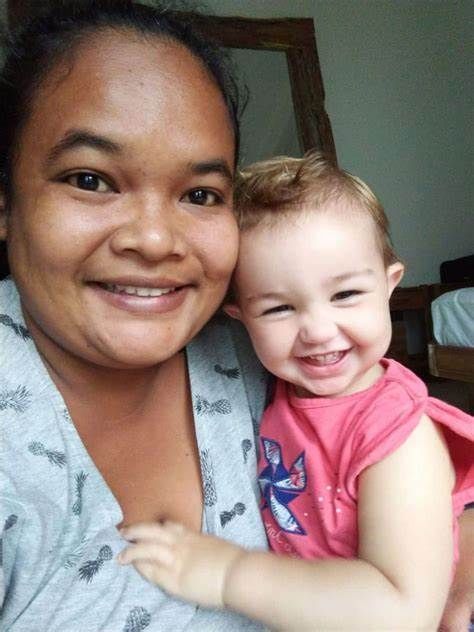Fostering Resilience and Confidence: Effective Approaches to Empowering Children to Voice Concerns About Abuse
7 minute read
Empowering Children to Speak Out Against Abuse in 2025: Research-Backed Strategies for Parents, Nannies & Educators
Abuse can take many forms — emotional, physical, sexual, or neglect — and its effects can be devastating and long-lasting. In 2025, with increasing awareness of children’s rights, the need to empower children to recognise and report abuse has never been more urgent.
Yet many children remain silent out of fear, shame, or a lack of understanding about their rights. Whether you’re a parent, nanny, teacher, or community member, your role in creating a safe and supportive environment is crucial.
This comprehensive guide draws on expert insights and research to outline practical, proven strategies for empowering children to speak out — and to ensure they know they will be believed, supported, and protected.
1. Build Open Communication from Day One
Why it matters: The Australian Institute of Family Studies reports that children are more likely to disclose abuse to trusted adults when they have positive, open communication in their everyday lives.
Practical steps:
- Practice Active Listening: Give children your full attention, make eye contact, and respond with empathy. This tells them their feelings are valid and important.
- Normalise Difficult Conversations: Talk about feelings, relationships, and safety regularly, not only when there’s a problem. Weaving these topics into daily life makes them less intimidating.
- Use Age-Appropriate Language: Choose simple, clear terms that match the child’s developmental stage. For example, instead of “inappropriate physical contact,” say “touch that isn’t okay.”
“Children need to know they can ask questions about their safety without fear of getting into trouble.” — Bravehearts Australia
2. Teach Boundaries and Body Autonomy Early
Why it matters: Harvard’s Center on the Developing Child highlights that giving children control over their bodies from a young age helps them recognise unsafe situations and builds resilience.
Practical steps:
- Explain Consent in Simple Terms: Let them know they can say “no” to any touch that makes them uncomfortable — even from relatives.
- Role-Play Situations: Act out scenarios where a child might need to say “no” or seek help. Practising responses builds confidence.
- Provide Visual Resources: Use books and videos from reputable organisations such as the NSPCC or Kids Helpline to reinforce key concepts.
Example:
A nanny can weave body autonomy into everyday activities, such as asking, “Would you like a hug goodbye, or a high-five instead?” This shows children their preference matters.
3. Create Trust and Safe Relationships
Why it matters: The 2024 Australian Child Maltreatment Study found that trust in adults strongly influences whether children report abuse. If children believe they will be met with disbelief or anger, they may stay silent.
Practical steps:
- Be Approachable: Keep your tone calm and non-judgmental, even if what they share is shocking.
- Respect Privacy: Share their disclosure only with those necessary to protect them — never as gossip.
- Encourage Peer Support: Foster friendships based on trust and respect. Peer networks can provide encouragement to speak out.
4. Use Empowering Language Every Day
Why it matters: Language shapes self-worth. Positive, affirming language helps children feel capable and respected, which in turn increases their willingness to speak up.
Practical steps:
- Promote Self-Expression: Encourage children to describe their feelings and experiences in their own words.
- Avoid Victim-Blaming: Never imply they “should have” done something differently.
- Praise Bravery: Acknowledge the courage it takes to share difficult information.
“The simple act of being believed can change the trajectory of a child’s recovery.” — Australian Childhood Foundation
5. Partner with Schools and Community Groups
Why it matters: Abuse prevention is most effective when it’s reinforced in multiple environments — home, school, and community.
Practical steps:
- Support School Safety Programs: Advocate for protective behaviours programs in schools.
- Engage NGOs: Work with local organisations like Bravehearts or Child Wise to run workshops.
- Host Awareness Events: Organise family safety days or child protection information sessions in community spaces.
Australian example:
The Safe Touch program, implemented in several Australian schools, uses role-play, storytelling, and visual aids to teach children about body safety in a non-scary way.
6. Teach Advocacy and Reporting Skills
Why it matters: Knowing what to do if something feels wrong empowers children to act quickly and confidently.
Practical steps:
- Show Positive Role Models: Share age-appropriate stories of people who spoke up and were supported.
- Involve Them in Awareness Campaigns: Even small acts like wearing ribbons during Child Protection Week can build a sense of agency.
- Explain Where and How to Report: Teach children about trusted adults, helplines, and safe spaces where they can get help.
Key Australian resource:
Kids Helpline — 1800 55 1800 — offers free, confidential support 24/7.
7. Use Media and Storytelling as Tools
Why it matters: Stories, books, and role-play make complex ideas more relatable and easier to remember.
Practical steps:
- Select Safe, Age-Appropriate Stories: Use children’s books that depict characters standing up for themselves.
- Incorporate Story-Based Activities: After a story, discuss what the character did when they felt unsafe, and brainstorm other options.
- Create Their Own Stories: Encourage children to write or illustrate situations where a child speaks out and gets help.
8. Support Ongoing Confidence and Resilience
Why it matters: Speaking out is not just about one moment — it’s about a child’s ongoing confidence in their right to be safe.
Practical steps:
- Celebrate Assertiveness: Praise children when they express preferences, even in small ways, like choosing what game to play.
- Revisit Safety Topics Regularly: Keep the conversation alive rather than treating it as a one-time lesson.
- Model Respectful Boundaries: Let children see you respecting others’ boundaries in daily life.
Conclusion: Creating a Culture of Safety
Empowering children to speak out against abuse is an ongoing process that requires consistent effort, empathy, and education. By combining open communication, body autonomy, trust, empowering language, and community involvement, we can give children the confidence to use their voices without fear.
As Harvard’s Center on the Developing Child notes:
“Safe, stable, and nurturing relationships are essential for healthy development. When children know they will be supported, they are more likely to seek help when they need it.”
Every adult has a role to play — not just in reacting to abuse, but in building the kind of environment where abuse is less likely to happen, and far more likely to be reported if it does
Frequently Asked Questions
Title or Question
Describe the item or answer the question so that site visitors who are interested get more information. You can emphasize this text with bullets, italics or bold, and add links.Title or Question
Describe the item or answer the question so that site visitors who are interested get more information. You can emphasize this text with bullets, italics or bold, and add links.Title or Question
Describe the item or answer the question so that site visitors who are interested get more information. You can emphasize this text with bullets, italics or bold, and add links.










